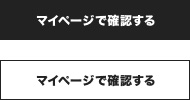- トップページ/
- Home/
- Home decor/
- POTTERY OTOGI SHIROINU
POTTERY OTOGI SHIROINU
A pair of left and right side to ward off bad luck
These two dogs with dull eyes, a slightly smug expression, and adorable big ears are otogi dogs that are displayed with hina dolls.Usually, these dogs are made of paper or papier-mache, but Ueide Choemon Kiln produces Kutani ware of these dogs.The shapes, colors, and patterns of these figurines are all unique to Kamide Choemon Kiln.Gogi-Inu (dog), also called Inubako (dog box), has been displayed on the left and right sides of the head of the doll since olden times.A pair of dogs on either side of the doll is used to ward off bad luck and to wish for the healthy growth and happiness of the child.The dog is also loved as a guardian deity of easy childbirth, as it is believed to be fertile and light in childbirth.
The Form of Prayer Spun by a Fairy Dog
Gogi-inu has been displayed on either side of Oyao as a furnishing for Hina dolls since ancient times.They were placed as guardian deities for hina dolls and, like hina dolls, are filled with wishes for the healthy growth and happiness of the child.It is also characterized by its box shape, which is said to have been used to store cosmetic tools and good luck charms.In addition to such use, it can also be used to store accessories and other items when used as interior decoration.
This Mikogi-Hakugu is simple enough to blend in with contemporary interiors, yet has the unique painting style of the Ueide Choemon kiln that will make you smile.The cherry blossoms and pine trees on the young pine trees are painted with cherry blossoms, tachibana, and young pine trees in accordance with "Sakon no Sakura, Ukon no Tachibana," and the gold shiro is painted simply in one color of gold.The inside also has lovely paintings: on the young pine tree, cherry blossoms and pine tree, toys and tools are painted in white to express the innocence of a child, and on the kinshiro, a small hairpin and Temari ball are painted in gold.The design is playful in every detail.
It can be displayed as a stand-alone doll like the hina dolls, or more splendidly as a furnishing for hina dolls by arranging it on either side of the small Momozome no Hina Kinshiro,Momozome no Hina Pine and Plum, or Pine and Wisteria.The Gogi-Dog, the fruit of Kutani Yaki tradition and craftsmanship, will stay with you for a long time as a symbol of the wishes passed down from generation to generation and as a comfort in daily life.
Bringing Tradition into the Modern Age
Founded in 1877 in Terai-mura, Nomi County, Ishikawa Prefecture (now Terai-machi, Nomi City, Ishikawa Prefecture), Kamide Choemon Kama is a Kutaniyaki potter with a history of over 135 years, and a long-established company that handles the entire production process from porcelain molding to painting.The handmade and hand-painted products are attractive for their colorful overglaze painting, deep color dyeing, and above all, their durable and beautiful fabrics.The colors, shapes, and handwritten designs of each item are designed to suit modern lifestyles while utilizing the traditional Kutaniyaki manufacturing method, and have a mysterious charm that attracts people who use Kutaniyaki, even if they are not familiar with it.
Kutani ware representing Japan
Kutani-yaki, like other pottery, began with people shaping and painting by hand.In the Edo period (1603-1867), the Maeda family, the lords of the Kaga domain, discovered pottery stones and began to produce porcelain. Later, they learned pottery techniques in Bizen Arita, and this traditional Japanese craft expanded to include vessels for enjoying tea.The characteristic feature of porcelain is that it is easy to use as tableware and pleasing to the eye, with various patterns on a clear white base. The appeal of porcelain is the color painting that shines on the white hard vitreous material of the porcelain.
Kamide Choemon Kama is a kiln that has been manufacturing and selling mainly arts and crafts, kappou tableware, and daily tableware, and continues to preserve the tradition of Kutaniyaki.Because it is hand-painted, no two pieces are alike.The fact that the painting changes depending on the craftsman who worked on it and the time of production also adds value to each piece.Kamide Choemon Kama insists on hand-painting because he believes that human hands have great potential.People are overwhelmed by the warmth, familiarity, and taste, or the skill and precision of handmade objects.Kamide Choemon Kiln continues to carefully produce and preserve hand-painted pottery with the belief that "what people produce in any age has great power to move people's hearts.
| Size | 7.5 x 3.6 x 4.5 cm |
| Weight | Gross weight: 330g,
each piece: 90g |
| Material | crockery |
| Country of origin | Japan |
| Gift box | This product would be packaged in a gift box. |
Notice
-
Please handle it gently as it is very fragile and vulnerable to shocks such as falling over.
Please note that each doll is handmade and hand-painted by craftsmen, so there may be individual differences and the doll may differ from the one in the photo.
Please keep the doll out of the reach of small children as much as possible.
Please use a dust blower for camera or computer keyboards or a brush for makeup to clean the doll.
Do not use a dishwasher.It can be washed in water, but please be careful not to damage it.
受注会について
-
・受注期間:1月7日(火)〜1月21日(火)正午
・お届け:2月上旬から順次発送いたします。
▼事前に必ず以下をご確認ください。
・受注会終了後のキャンセルや、お届け後の商品の返品、交換は承っておりません。
・受注状況によっては、早期終了する場合がございます。
・お支払い方法は、【クレジットカード・アマゾンペイ・キャリア決済】のいずれかをお選びください。
・決済の都合上、発送前に決済確定を行う場合がございます。予めご了承くださいませ。
・受注会のお品物は、上出長右衛門の受注会商品以外とはおまとめが出来ません。お手数ですが、別でご注文いただきますようお願い致します。
・配達日の指定は出来ません。
・在庫状況によってはキャンセルとさせていただく場合がございます。何卒ご了承くださいませ。
よみもの|今年は御伽犬も一緒に|手のひらサイズのかわいい雛人形受注会
ブランド紹介
KUTANI CHOEMON
KUTANI CHOEMON is founded in 1879, in Nomi region of Ishikawa Prefecture, Japan. The brand has been produced Kutani ware, the traditional tableware of Ishikawa Prefecture with skilled artisans. The products usually use indigo blue and five colors on white porcelain to express the tradition of Kutani ware. The brand also tries to pursue new patterns for our modern dining. The products are all manufactured in a single studio; the whole process, including forming, painting, firing, and glazing, is operated there.
| 商品 | 価格(税込) | 在庫 | 個数 | |
|---|---|---|---|---|

POTTERY OTOGI SHIROINU(YOUNG PINE WITH CHERRY BLOSSOMS AND PINE) 送料無料対象商品(一部地域除く) |
¥42,900(税込) |
✕
|
Withdrawn |
|

POTTERY OTOGI SHIROINU(GOLD AND WHITE) 送料無料対象商品(一部地域除く) |
¥26,400(税込) |
✕
|
Withdrawn |
Added to cart
【受発注】御伽白狗 ※2月上旬発送予定には、他にもこんな仲間がいます
-
KUTANI CHOEMON
CHOEMON SEATED CAT¥11,550〜(税込)
-
KUTANI CHOEMON
CHOEMON MANEKI NEKO LUCKY CAT¥10,120〜(税込)
-
KUTANI CHOEMON
LUCKY CAT¥9,900〜(税込)
-
KUTANI CHOEMON
SMALL FLOWER-SHAPED PLATE¥3,300〜(税込)
-
KUTANI CHOEMON
SMALL SQUARE PLATE¥2,970〜(税込)
-
KUTANI CHOEMON
KUTANI TEACUP PIPER¥7,150(税込)
-
KUTANI CHOEMON
ROUND PLATE FRUIT ENGRAVING¥5,720(税込)
-
KUTANI CHOEMON
RICE BOWL WITH DYED SANSUIBUN¥8,140(税込)
-
KUTANI CHOEMON
SIDE DISH FLOWER¥3,080〜(税込)
-
KUTANI CHOEMON
SERVANT TIGER¥7,700〜(税込)
-
KUTANI CHOEMON
KUTANI SAKE SERVING VESSEL STRIPE¥17,050(税込)
-
KUTANI CHOEMON
KUTANI SAKAZUKI SAKE CUP WITH HANDLE¥7,920(税込)
-
KUTANI CHOEMON
Small porcelin container Plum Red and White¥12,100(税込)
-
KUTANI CHOEMON
KUTANI TINY PLATES GOURD SET OF FIVE¥9,350(税込)
-
KUTANI CHOEMON
FLAT PLATE LANDSCAPE¥6,600(税込)
-
KUTANI CHOEMON
KUTANI SMALL BOWL PAPER BALLOON¥7,480(税込)
-
KUTANI CHOEMON
KUTANI SMALL BOWL PLUM PATTERN¥4,620〜(税込)
-
KUTANI CHOEMON
CHOPSTICK RESTS LANDSCAPE¥5,500(税込)
-
KUTANI CHOEMON
KUTANI SOY SAUCE DISPENSER¥8,800〜(税込)
【受発注】御伽白狗 ※2月上旬発送予定を見た人はこんなアイテムも見ています
-
ponpindo
ZABUTON CUSHION¥7,920(税込)
-
台屋(DAIYA)
Dried Bonito Shaver Walnut¥12,100(税込)
-
大矢製作所(おおやせいさくしょ)
Oval spice grater¥5,280(税込)
-
KANEKO KOHYO
LINKER DISH¥2,530〜(税込)
-
GATOMIKIO
Wooden bowl set of 6-Ouryouki¥30,800(税込)
-
播州刃物
Scissors for Embroidery¥8,250(税込)
-
HYOZAEMON
CHOPSTICKS WASHI GIFT SET DISH WASHER SAFE¥5,212(税込)
-
HANAMOKKO
TABLE CLOCK BLACK¥18,150(税込)
-
MIYAMOTO TAIZANDO
JAPANESE PLATE WITH TWIN FISH DESIGN¥3,776(税込)
-
鋳心ノ工房(チュウシンコウボウ)
Bookend Fold¥11,000(税込)
-
SHITSURINDO
LONG OVAL BENTO BOX¥16,500(税込)
-
WAJIMAKIRIMOTO
MINI FORK¥11,000(税込)
-
Kakunodate DENSHIRO
CANDY BOX¥9,900(税込)
-
SIWA|紙和(シワ)
SIWA mina perhonen PEN CASE AND PC CASE¥15,840(税込)




















%20MILK.jpg)
















.jpg)


































.jpg)






.jpg)





.jpg)

































































































